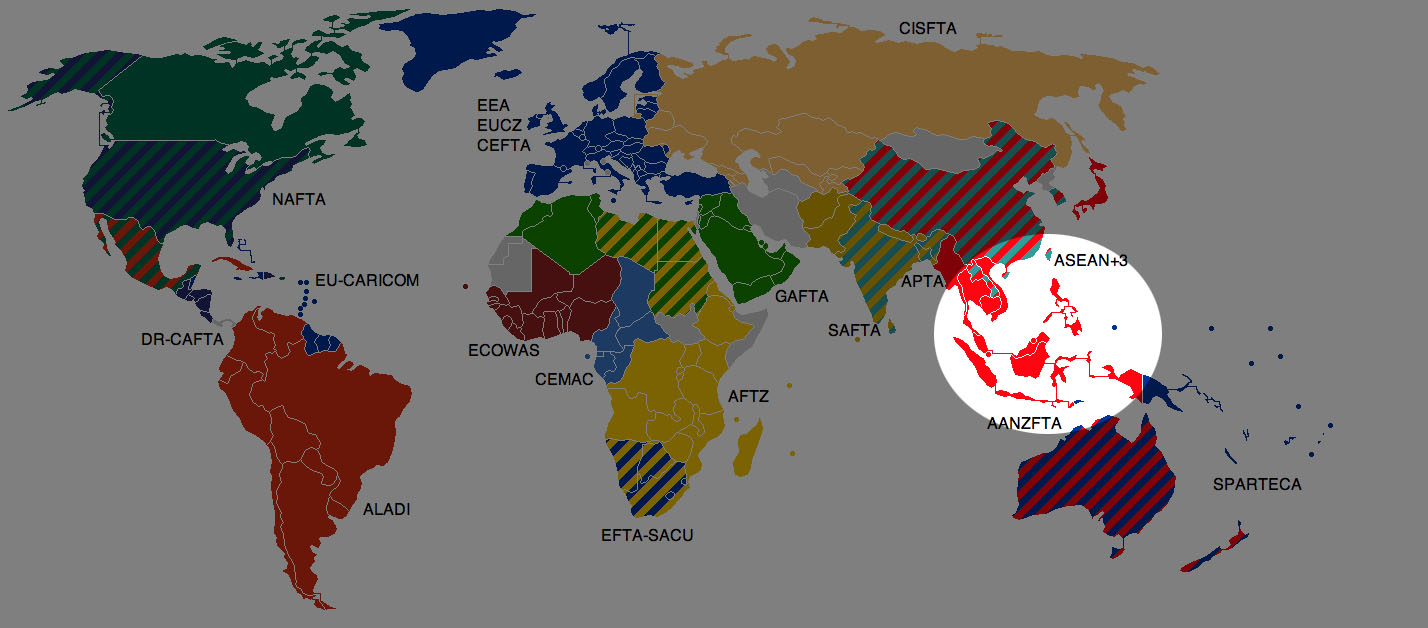Similar to the structure and practice of the European Union, the organization known as ASEAN (the Association of Southeast Asian Nations) has worked for decades to encourage cultural and economic development among the lesser nations in this region, as well as forge fair free trade agreements with neighboring countries. Moreover, a commitment to international peace and prosperity remains a goal as emphasized by recent statements from ASEAN, as the countries look toward improvement in the next decade.

About the ASEAN Nations
Membership in ASEAN has expanded since its inception in 1967 to include ten Southeast Asian countries:
- Brunei - As one of the more oil-rich nations in the regions, Brunei has grown economically in the last decade. Despite periodic dips in the GDP over the last years, Brunei remains one of the top oil producers in Asia.
- Cambodia - While one of the poorer nations of ASEAN, Cambodia benefits from strong agricultural production, especially rice, and growth in labor industries like construction.
- Indonesia - In the last few years, Indonesia has enjoyed a steady decrease in inflation coupled with growth in their GDP. The majority of their exports come from oil and byproducts.
- Laos - The only totally landlocked nation among ASEAN members, Laos also has one of the poorest economies. As such, they are very dependent on foreign aid.
- Malaysia - Malaysia is one of the larger nations in ASEAN in terms of economy and GDP. A long standing status as a prime trade nation continues to this day.
- Mynamar - Also known as Burma, this nation is challenged by economic sanctions and various financial problems. Nonetheless, they have shown slight growth in the last few years.
- Philippines - This island nation is primarily a service industry, known for assembly of products shipped throughout the world. GDP growth has been steady but slowing in recent years.
- Singapore - In 2010, Singapore claimed the fastest growing economy, due in part to their status as a banking power in Asia and prominent trade hub.
- Thailand - Natural disasters, in particular the recent flooding of the area, have challenged the Thai economy, but growth is nonetheless projected for the industrial sector at a rate of 4-5%.
- Vietnam - Recent plans for economic reform in Vietnam designed to combat challenges brought on by decreased foreign exchange reserves and dependency on foreign aid.
ASEAN +3
It is significant to note that while the prominent trade powers of Asia - namely China, Japan, and South Korea - are not ASEAN members, each is involved in a free trade agreement with ASEAN and are known as the Plus Three. These treaties have proven beneficial to the lesser economies in that billions of dollars in direct investment (almost $15 billion US in 2010) is invested here by the Plus Three countries.
The union of ASEAN +3 has also proven to improve political relations between nations in the region, particularly those with concerns of becoming marginalized. China's presence in ASEAN, for example, and subsequent positive inroads with member nations is believed to have helped improved relations elsewhere. China's 2010 trade agreement with Taiwan, the Economic Cooperation Framework Agreement (ECFA) is arguably one result of participation in ASEAN.
China, Japan, and South Korea in turn benefit by using the ASEAN nations as a collective conduit of trade with each other . These three countries presently do not have trade agreements with one or two of the other three, so the relationships with ASEAN may help forge inroads in trade.
The Future of ASEAN
ASEAN Vision 2020, as established by the organization around 1997, set goals to improve peaceful relations not only between member nations but outside countries. The commitment to allow member nations to handle internal affairs without the threat of outside force or other interference will hopefully permit economic and cultural growth. Associations with other nations in free trade agreements, notably the AANZFTA treaty with Australia and New Zealand, seek to benefit those members with lesser GDPs.
With recent problems related to the weather and natural disasters, ASEAN has in recent years also sought to place environmental concerns at the forefront of discussion. Attempts to control haze pollution, for one, may hopefully transfer to additional economic health, especially when the ASEAN nations collectively bid on a future FIFA World Cup. What success comes of this endeavor will surely demonstrate the influence and power ASEAN possesses as an organization.